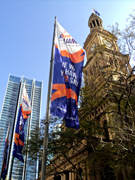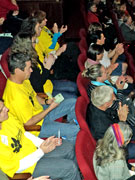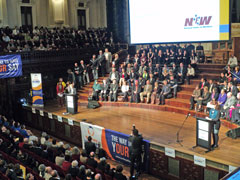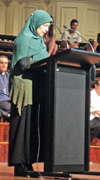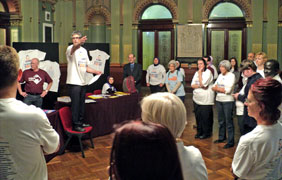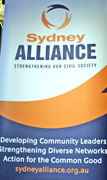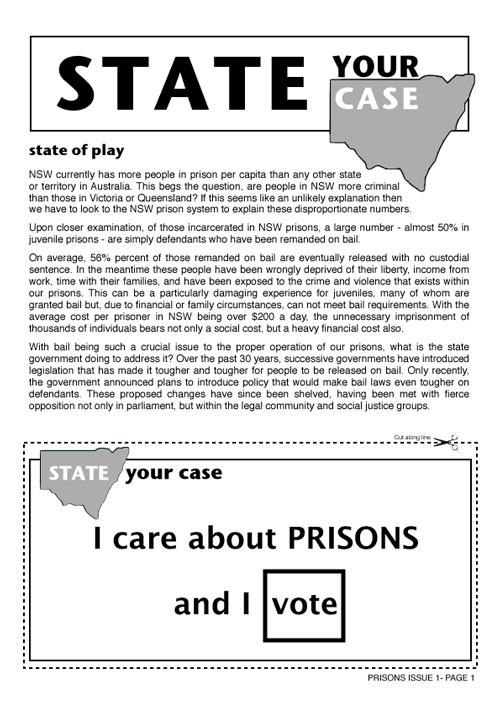Violence against Kachins continues
A 5-minute YouTube clip captures something of the plight of Kachin internally displaced persons and refugees.
Victims include people from the area where the Marist Fathers worked before moving to Ranong, Thailand.
Click here |
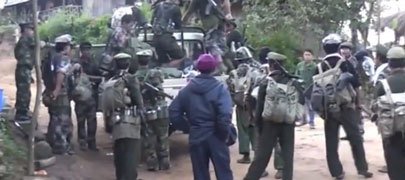 |
Scenes from YouTube 'Conflict, Abuses & Humanitarian Crisis in Kachin State, Myanmar'.
Made available through 'Relief Action Network for IDP and refugees (RANIR)'. |
| |
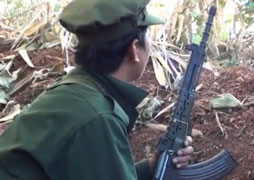 |
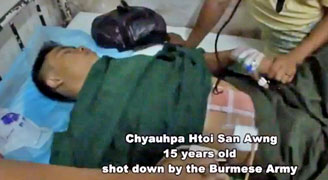 |
|
Australian Bishops welcome
on-shore processing of
asylum seekers

Media release from the Australian Catholic Bishops Conference, through the Australian Catholic Migrant and Refugee Office,
Oct 14, 2011

| The Catholic Church welcomes the decision taken yesterday by the Government to process the claims of vulnerable asylum seekers onshore.
Yesterday, the Prime Minister, decided to delay the Migration Bill accepting that onshore processing had to be adopted.
This came after the High Court found that the Government did not have the power to swap asylum seekers with Malaysia due to in adequate protection safeguards.
“The Government knows all too well the views of the Catholic Church on this matter. The Catholic Church has always been advocating in favour of onshore processing”, said Fr Maurizio Pettena, Director of the Australian Catholic Migrant and Refugee Office.
“Global contemporary migration which reveals the plight of asylum seekers is marked by injustices, abuses, exploitation, human trafficking and all sort of persecutions.
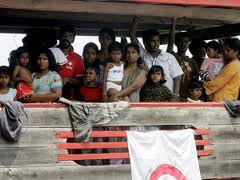
"This poses a very serious and urgent call to action on the part of the human community and more so on the part of those who have been elected to public offices to serve for the good of all”, he said.
[top of next column...] |
The Catholic Church offers pastoral care to asylum seekers both during the time their visas are being processed and after and has always offered to work with the Government in the pursuit of more humane ways to respond to the cry of asylum seekers.
“More boats will likely come as this unfortunately is the reality of the world we live in – there is still much suffering in the world.
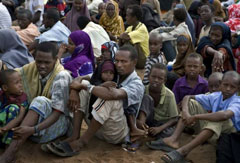
"However, this is not a call for alarm or community anxiety, on the contrary, Australia boosts over 200 Charities ready to support asylum seekers in the community.
"Helping others never leads to social unrest; rather, it builds goodwill, peace and international respect” said Fr Pettena.
The Catholic Church calls on all political parties to work towards implementing a fast and effective system of onshore processing which will give back to asylum seekers the human dignity they long for and will enable them to fully contribute to our Australian society.
“The Government has been visionary in hosting asylum seekers in the community, having recently moved a great number of Children out of detention.
"The catholic church strongly encourages
the Government to continue in this endeavour” he said. |
|
|
|
|
Peace walk in Paso Real
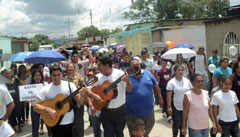
Marist missionary, Fr Tony O'Connor, recounts how the peace-loving barrio dwellers of Paso Real, Valencia, Venezuela, have addressed violence to youth in their neighbourhood.
| In Barrio Paso Real where I live and in the neighbouring barrios many young men between the ages of 16 and 25 die at the hand of assassins’ bullets.
Some deaths are drug or robbery related but most as a result of a growing and generally wide-spread culture of violence, where one group is warring with another or one family avenging another for the death of a loved one or a sicario sent to do the job, all a “rat a tat tat” like the sound of the automatic weapons used and all so seemingly senseless.
It is calculated that there are some six million illegal fire arms in Venezuela where they are status symbols to many of these young people.
You can imagine the feeling of insecurity in the barrio. You never know when you could be hurt by a lost bullet or caught in a cross fire.
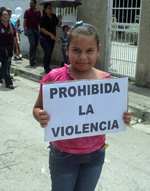
There are the children to protect, not just from the physical danger but the climate of hurt, revenge, violence and insecurity.
People have enough to contend with in their daily lives without this accelerating culture of self assumed and self inflicted so called justice. No family is unaffected by the climate and the consequences are that all suffer pain at the loss of loved ones.
Today,
Sunday the 9th October more than 200 people did the same as the Israelites some millennia ago in the spirit of marching around the walls of Jericho.
[top of next column...] |
A leader of the group knows well the passage from the Book of Joshua, his way of sharing with the people about the power of prayer and walking valiantly with faith in God.
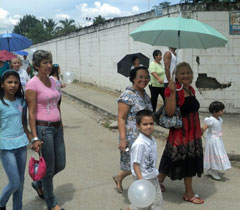
They made a peaceful march as a sign that enough is enough, as a plea for peace and a ceasing of violence.
The spirit of the gentle crowd was joyful enthusiastic, full of prayer, music and song.
The same people are passing the word and are decided that if God does not heed their prayer and permits that there be more deaths of this kind, when or if a youth die in this way they will walk again and again in song, prayer and protest.
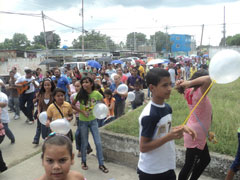
Even though today’s march was filled with spirit, joy and hope, there were tears in the eyes of many as they prayed for their loved ones still in danger and under threat and as they remembered those who had fallen in these useless acts of violence.
I counted in the crowd six mothers who are still grieving and I am sure that there were more.
“The Lord said to Joshua.’You shall march round the city... on the seventh day you shall march round the city seven times and when the trumpets sound the walls of the city will fall flat.’ ” (Joshua Ch. 6)
|
|
|
Day of Prayer for
displaced Kachins
As Burmese army attacks on villages continue and more than 20,000 now forced out of homes, Banmaw's Bishop Raymond Sumlut Gam calls for a day of prayer on Oct 09.
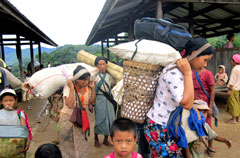
The diocese of Banmaw, in northern Myanmar, is dedicating a day of prayer to Kachin State people who have been displaced as a result of continuing fighting in the region, said Bishop Raymond yesterday (Oct 05).
| The bishop said that since the fighting began, the church urged all the parishioners to pray.
“We are very concerned for the future of the displaced people there so we nominate October 9 as a day of prayer and we will give our special attention to them.”
According to rights groups, more than 20,000 civilians have been displaced as a result of a renewed offensive by the Myanmar government in Kachin State.
Bishop Raymond said this was a way to show “solidarity” with those who have been forced to move out of their homes in the conflict, in which the army is allegd to be repeatedly attacking Kachin villages.
The bishop told all the parishes to conduct the prayer day and collect contributions from parishioners for those affected.
As well as praying, the Church is helping with tents and other items.
Fr Paul Lahpai Aung Dang, director of Karuna Banmaw Social Service (KBSS), said that the Church had set up camps for the displaced people, given them shelter and supported them with food and non-food items, water and light.
[top of next column...] |
Priests, religious nuns and volunteers from Banmaw diocese are helping with children’s education and health care.
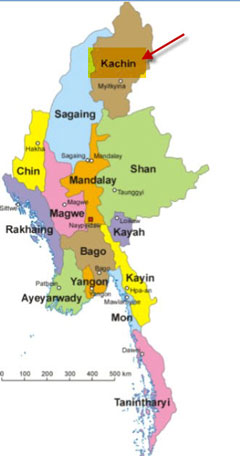
Fr. Aung Dang said: “The Church has tried to help more than one thousand schoolchildren in boarding schools and convents and is hiring teachers so that the children can continue their studies.”
ucanews.com Oct 06, 2011 |
|
|
|
|
Sydney Alliance launched
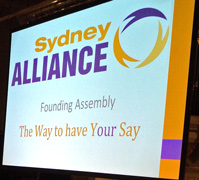
Sydney Town Hall was overflowing as people from over 45 organisations with members numbering 500 000, came together to found the Sydney Alliance on Sep 15. | Between 6 and 7pm over 2000 people spilled over the streets, square and footpaths around the town hall, coming together to find a new way to have a say over the decisions that affect their lives in Sydney.
Randa Kattan, the chairperson of the Alliance told the crowd, “we have arrived”.
Statements of support were received from the Governor of NSW and Cardinal George Pell. Governor Marie Bashir wished us well and said the work of the Alliance “can demonstrate a model which will contribute to the greatness of Australia, a model for communities everywhere.”
The Cardinal’s message said “the Sydney Alliance is a new and significant force for the common good in Sydney. Its strength is found in the range of organisations and viewpoints involved and the fact that they take seriously the task of rebuilding community in this city.”
All our organisational leaders spoke in a fast-paced roll call – as people in the hall stood to be recognised as the new founding partners of the most diverse alliance Sydney has ever seen.
We heard the story of the Sydney Alliance – how we grew in response to the challenges of the Cronulla Riots and attacks on the fair go.
[continued below...] |
Anne Robertson shared the story of her mother and the personal strain she has experienced in an aged care institution.
We heard a vision of an inclusive city – where people’s gifts and strengths are valued.
Vanu Coughran told her story of being violently attacked at a Sydney petrol station in 2007.
But she said “it was the loss of her eye that allowed the eyes of her heart to see.”
Her decision to forgive her young attackers led her to a life of community organising, where she works to ensure young people are accepted and have a stake in the city.
When Izzy Hadife, 19, told the crowd he wanted a city where he could be a young man not a man of “middle east appearance,” the crowd exploded in applause.
Maha Abdo, from the United Muslim Women’s Association invited Victor Dominello, the Minister for Citizenship, Communities and Aboriginal Affairs to the stage, and asked him if he would work with us on social inclusion by coming to our people’s assemblies in 2012.
He said “yes, yes, yes” and committed to being a champion of the Alliance in Macquarie Street. [continued below...] |
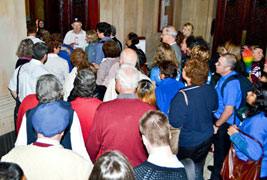
|

|

| How we stand on the shoulders of community coalitions that go before us, like the Green Bans of the 1970s.
How we built the Alliance through one-to-one relationships, then training across our diversity – where we “don’t ask people to sort out their differences, but to engage in their commonalities.”
Then a vision was case for the future of Sydney – where the trust and respect that we have built inside the Alliance can be cast out to the city as a whole.
Wishes of support were received from our sister organisations in London and New York, and Joe Chrastil from the Industrial Areas Foundation spoke to us, saying “it was one of the best” founding assemblies he has seen in all his time organising.
A new breed of community leaders spoke. Liuanga Palu, a young community leader from Marrickville Uniting Church shared how she used community organising to help reconnect her community after one of her friends had been killed.
The Agenda for the Common Good was launched – with a new vision for community care and health, transport and social inclusion.
From Community Care and Health we heard about the need to provide support for families who often struggle under the pressure to care for others at significant times of their lives – whether kids, illness or age.
[top of next column...] |
Gwen Hackett and Emily Pearce shared their experiences of getting around the outer western suburbs of Sydney.
Gwen struggling with buses that don’t come and Emily often spends four hours getting to and from her University – because she has to travel from Penrith to Campbelltown.
Sue Day spoke about our vision for transport – where we can move around Sydney on public transport that is an alternative to the car.
She said “we must be different to what has gone before”, and talked of our vision of an enforceable customer service standard.
Bob Schroder from the Rail Tram and Bus union quizzed Charles Casuscelli, Liberal Member for Strathfield, and Dr Geoff Lee, Liberal Member for Parramatta – asking them to attend a transport assembly in Penrith to discuss the customer service standard. They both said “yes”.
Then the call to action went out – people were asked to stand to come to Alliance orientations, 2 day trainings, and to get involved in the transport assembly, social inclusion assemblies and our community care research.
Most in the hall stood at one time – and over one thousand commitment cards were collected at the end.
We finished the Assembly listening to the “Harbour City” a song written especially for the Sydney Alliance.
It was a great beginning. |
No asylum for government on refugee processing
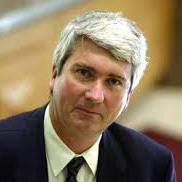
Fr Frank Brennan SJ on Australia's high court ruling against the Malaysia boat people deal - and the serious blow it is to ministers
| The Australian government has taken a 6-1 drubbing in the high court of Australia. Many lawyers, myself included, are surprised, and some of us delighted.
Offshore processing of asylum seekers has become a legal minefield for government.
The judges have erected three obstacles for any government wanting to ship asylum seekers offshore before attending to their claims.
First, from now on, government will have to process boat people onshore in Australia unless they are certain that they can line up a processing country which provides appropriate access and protections “as a matter of legal obligation” either under international law or under the domestic law of the country.
Second, the government can no longer rely on the general power to remove an alien when wanting to remove from Australia someone who is seeking asylum.
Providing protection
The government will be able to remove asylum seekers prior to the determination of an asylum claim only to a country which is legally obliged to process the claim and to provide protection.
Third, no Commonwealth official will be able to remove unaccompanied minors or other children of whom the minister is the guardian without the consent in writing of the minister.
The high court has noted that the minister’s decision to grant consent to removal of each child would be a decision which might require “the giving of reasons as well as the availability of review” by a court.

Though Chris Bowen and Julia Gillard will wear the political wrap, their legal problems were created for them by John Howard and Philip Ruddock who legislated with such indecent haste after the Tampa incident. It’s just that the law was never tested.
Rights standards
In order to send the next 800 boat people to Malaysia, Chris Bowen purported to make a declaration under section 198A(3) of the Migration Act declaring that Malaysia provided access to appropriate asylum procedures, and protection to asylum seekers and proven refugees awaiting resettlement, while meeting relevant human rights standards.
The Commonwealth solicitor general, Stephen Gageler, had submitted to the court that the minister need only act in good faith, asking himself the right questions, and that there was no need for judges to trouble themselves with second-guessing the answers.
After all, section198A(3) had been introduced post-Tampa for the purpose of sending people off to Nauru, which had signed hardly any international human rights treaties and which had almost no domestic law providing these protections.
Gageler told the court that the statutory language of “protection” and “relevant human rights standards” was “meaningful but lacking in precise legal content”.
Not impressed
The judges were not impressed; they have insisted on precise legal content for these notions so that Australia might continue to comply with its obligations under the Refugee Convention.
Four judges noted: “The observations and judgments made in the DFAT advice demonstrated that none of the first three criteria stated in section 198A(3)(a) was or could be met in the circumstances of these matters.”
If Ruddock’s Nauru declaration had been challenged in the high court, most lawyers thought that there would have been no dispute.
On the Gleeson Court back then, Justice Kirby might have raised a cry. But judicial deference to the executive on these issues was the more likely outcome.
[top of next column...] |
The Commonwealth submitted that section 198A was enacted with a view to declaring Nauru as an appropriate country for offshore processing in 2001.
Four of the High Court judges conceded that this might have been the hope or intention of the legislators but this did “not bear upon the curial determination of the question of construction of the legislative text”.
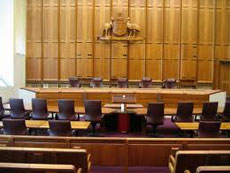
Perhaps pointing a way out for a government of either political persuasion in the future, these judges did observe that the 2001 arrangements with Nauru “were very different from those that are now in issue.
Not least is that so because Australia, not Nauru as the receiving country, was to provide or secure the provision of the assessment and other steps that had to be taken, as well as the maintenance in the meantime of those who claimed to be seeking protection.
Not legally binding
Thus it was Australia, not the receiving country, that was to provide the access and protections in question.
Further, although the arrangement between Australia and Nauru was recorded in a very short document, the better view of that document may be that it created obligations between the signatory states.”
The document drawing up the Malaysia solution specified that it was not legally binding.
The only dissenting judge was Justice Dyson Heydon who was appointed to the court by the Howard government a year after the Tampa legislation was passed and just a couple of months after he gave a censorious political speech at the Quadrant dinner decrying the judicial activism of the judges who participated in judgments such as Mabo.
Heydon harked back to the halcyon days of Sir Owen Dixon, pointing out that Dixon would not have “found much profit in (a) source of law to which advocates of judicially changed laws increasingly look – international law or international expectations”.
Judgment
In his judgment, he had a gratuitous go at Catherine Branson, a former federal court judge and now president of the Australian Human Rights Commission for describing the commission as “Australia’s National Human Rights Institution”.
He now finds himself in the judicial wilderness giving undue deference to the intention of politicians when introducing and passing legislation.
He says: “In the context which existed when section 198A was introduced, the language employed by those who procured its enactment had, on its true interpretation, an application to the Republic of Nauru.
That was so despite the fact that the Republic of Nauru was not party to the listed treaties and despite the state of its domestic law.” His fellow judges will have none of that.
From now on, the high court will apply a very fine toothcomb to any legislation allowing ministers to ship asylum seekers offshore.
Manus Island and Nauru may still be legal options under an unamended migration act (though there is no guarantee of that), but not even they will be workable options if every child arriving on a boat has the right to full-blown judicial review of any decision to remove them from Australia.
Unless there were to be a bipartisan agreement in parliament or a government deal with the Greens, asylum seekers arriving by boat would now need to be processed fairly, promptly, on our terms and on our turf.
And that’s the way it should have been all along.
Australia, Sep 01, 2011 |
Kabul's Long 9/11 Decade
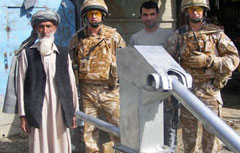
After 10 years, Afghans are weary of the foreign troops on their soil, but not everyone wants them to go home. Catherine James spoke to Kabul citizens about the 9/11 decade
| Zia was sitting with his village elder in a northern province of Afghanistan on 11 September 2001 when news of the attack on New York’s Twin Towers and the Pentagon was announced on the radio.
"He was so disappointed," Zia says. "He described it as a catastrophe. He said to me, ‘The trade of weapons has just started in Afghanistan’. He knew it meant more war."
But neither the elder or Zia had any idea how long that war would last.
"This is a big confusion for the Afghan people," says Zia. "When the Americans come and start bombing, the Taliban was finished in only a few weeks.
Everyone was free to do something. Things were good. Now after 10 years, there is much danger."
Zia, 59, is no stranger to conflict or its impact: his country has been locked in bloody battles for more than half his life.
He has moved his home base and uprooted his family repeatedly, including spending time in a refugee camp in Pakistan. Last year he moved his family to New Zealand.
But throughout it all, he has continued to engage in business in Afghanistan — mainly in trade and construction — seeing it as his contribution to a better future for his country.
He says economic assistance is the key to stability, beginning with the nation’s own security forces.
"Who would fight for $400 or $500 a month?," he asks. "If we support [the Afghan police and soldiers] well financially well, they will fight to the end and there will be no space for recruitment for other groups."
Zia would like to see the foreign forces leave. It’s not that he is not grateful for what has been achieved so far but he points to the worsening security situation as a sign that a foreign presence is not helping.
"Business is deteriorating. Every inch you move you pay lots of money for security now. The foreign community needs to trust the Afghan. There is no harmony, no co-operation. They need to invest not through physical presence but through jobs and development."
"Spending money on foreign troops is a big burden on the international community. A very big burden," he says.
"If they would reduce some of that cost per solider — I hear they are spending hundreds of thousands of dollars per person — and pay the [Afghan] police or army more so he is not in a position to take a bribe…" He shrugs.
"Without investment, you cannot help us," he says. "Bringing a soldier to show us how to shoot guns — I laugh when I see this on television. A 10-year-old Afghan knows how to shoot a gun."
Ahmad, 23, works in a Kabul guesthouse for foreigners. He is similarly baffled by the interminable war and the rising insecurity in light of the success of the first few months of the 2001 offensive.
His family returned to Kabul in 2003, after seven years in Iran. He has watched Afghanistan’s security backslide since his return.
He asks why the foreign forces are unable to take greater control of the country again. And he questions the source of the Taliban’s financial strength: "Who is paying the Talibs? Who?"
There’s one thing Ahmad is clear about: it is not time for the foreign troops to leave. Not yet, he says. "We are not ready."
Sameer, at 24, has had a similar life to Ahmad: he has only known his country in a state of upheaval.
His family moved to Pakistan for about 18 years, visiting intermittently and returning permanently in 2005.
"I do remember September 11," Sameer says. "We were watching CNN at home with my grandparents in Pakistan. We [had been] receiving news from our village about the Taliban coming and doing [bad] stuff and blowing up the Buddhas — we were hearing all that news.
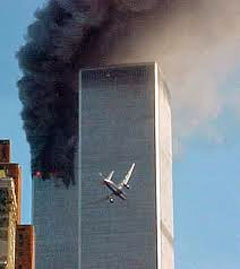
"But when we were watching that news about the Towers in the US, my grandpa, he was so shocked. He said, ‘What this is? This war is taking over the world?’ He was so upset about that."
[top of next column...] |
"Then when we heard that the international troops were coming to move out the Taliban. That news brought us so joy in our family and friends," Sameer continues. "Suddenly, when my father heard this he left everything and came to find our friends and family who had stayed [in Afghanistan] during that time.
"He couldn’t go before in Taliban time because he was a general. He find some dead, some alive, then he came back and told me, Son, we are going to go back home."
Sameer refuses to think that the country could return to the rule of the Taliban despite the growing strength of the insurgency.
"I don’t want to make that type of belief because I don’t want them to come back," he says.
"Right now I am living like safe, happy. I can go to my college, I can wear jeans, I can listen to music, my sisters are going to school, my father has a job back, we have a government, we have soldiers, we have everything."
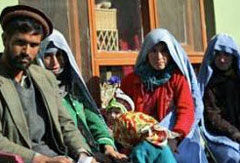
"[In terms of] security, I can say that during the Taliban time, the security was perfect. Because security came with the fear at the time.
"But there was no humanity. When a thief stole something they were cutting off his hands. And when a [rapist] did something, they were cutting off his head.
"If there was a woman doing bad, they were shooting her in front of the stadium of all the peoples. And this was making even the child’s mind so dirty. If someone did murder, they would hang him for, like, three or four days from a crane. What do you think? It will corrupt everybody’s mind. There was no humanity at that time."
While Sameer reasons that the foreign forces cannot stay and defend Afghanistan forever, he admits the thought of them leaving makes him afraid.
"The first time I heard that the armies were leaving, I heard that Canada was leaving, I was shocked," he says.
"But I know that they have to go one day, they cannot be there forever, they cannot spend their lives in Afghanistan.
"If you make a person stand in front of your house or you ask your neighbour so a thief cannnot come, how much can he tolerate it? One night, two nights? On the third night he will tell you, boss, I also have my own house."
"What we need is to make it ourselves. The Afghan National Army, Afghan National Police, that’s how we can stand on our own legs and defend ourselves.
"We have confidence but it is not yet 100 per cent. I am proud that I have soldiers of my own country, but when it comes to the leaving of the international troops, I am a feeling a little bit scared because we are not completely prepared yet."
But for some it is not fear of the Taliban that makes them afraid of the foreign troops leaving but war between themselves.
They fear the tribal, factional struggle for power that took place before the Taliban took control.
Such is the view of Mohsen, an Afghan contractor building multi-million dollar construction projects throughout the country.
Softly-spoken though firm, Mohsen looks older than his 35 years. He explains that he has had a hard life, it’s an all-too familiar story of being uprooted, moving between countries, between conflicts.
Mohsen’s employees face frequent skirmishes with insurgents at the project worksites.
He sees the work he does as necessary for the country to develop, but he laments the danger. For him, the departure of foreign troops would spell disaster.
He is not hopeful the Afghans can re build the country alone.
"If the foreign troops leave soon, Afghanistan will return to how it was 14 or 15 years ago," he says.
Like a civil war?
"Yes, like civil war."
He shakes his head and looks at his hands. And then at the sky.
www.newmatilda.com Sep 09, 2011
|
"Wind lens"
Japanese breakthrough will make wind power cheaper than nuclear
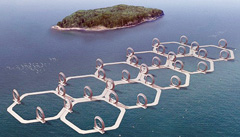
Kurt Burkart, Internet entrepreneur, blogs in 'Mother Nature Network' about the latest in geen media and technology
| A surprising aerodynamic innovation in wind turbine design called the 'wind lens' could triple the output of a typical wind turbine, making it less costly than nuclear power.
NOTE: Some major wind projects like the proposed TWE Carbon Valley project in Wyoming are already pricing in significantly lower than coal power -- $80 per MWh for wind versus $90 per MWh for coal -- and that is without government subsidies using today's wind turbine technology.
The International Clean Energy Analysis (ICEA) gateway estimates that the U.S. possesses 2.2 million km2 of high wind potential (Class 3-7 winds) — about 850,000 square miles of land that could yield high levels of wind energy.
This makes the U.S. something of a Saudi Arabia for wind energy, ranked third in the world for total wind energy potential.
Let's say we developed just 20 percent of those wind resources — 170,000 square miles (440,000 km2) or an area roughly 1/4 the size of Alaska — we could produce a whopping 8.7 billion megawatt hours of electricity each year (based on a theoretical conversion of six 1.5 MW turbines per km2 and an average output of 25 percent. (1.5 MW x 365 days x 24 hrs x 25% = 3,285 MWh's).

The United States uses about 26.6 billion MWh's, so at the above rate we could satisfy a full one-third of our total annual energy needs.
(Of course, this assumes the concurrent deployment of a nationwide Smart Grid that could store and disburse the variable sources of wind power as needed using a variety of technologies — gas or coal peaking, utility scale storage via batteries or fly-wheels, etc).
Now what if a breakthrough came along that potentially tripled the energy output of those turbines? You see where I'm going. We could in theory supply the TOTAL annual energy needs of the U.S. simply by exploiting 20 percent of our available wind resources.
Well, such a breakthrough has been made, and it's called the "wind lens."
Imagine: no more dirty coal power, no more mining deaths, no more nuclear disasters, no more polluted aquifers as a result of fracking.
[top of next column...] |
Our entire society powered by the quiet "woosh" of a wind turbine. Kyushu University's wind lens turbine is one example of the many innovations happening right now that could in the near future make this utopian vision a reality.
Yes, it's a heck of a lot of wind turbines (about 2,640,000) but the U.S. with its endless miles of prairie and agricultural land is one of the few nations that could actually deploy such a network of wind turbines without disrupting the current productivity of the land (Russia and China also come to mind).
It would also be a win-win for states in the highest wind area — the Midwest — which has been hard hit by the recession.
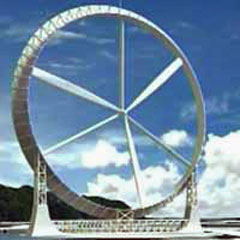
And think of the millions upon millions of jobs that would be created building a 21st century energy distribution system free of the shackles of ever-diminishing fossil fuel supplies.
It's also important to point out that growth in wind power capacity is perfectly symbiotic with projected growth in electric vehicles.
EV battery packs can soak up wind power produced during the night, helping to equalize the curve of daytime energy demand.
So the controversial investment currently being entertained by President Obama to pipe oil down from the Canadian Tar Sands would — in my utopian vision — be a moot point.
It is indeed a lofty vision, but the technology we need is now in our reach.
And think of the benefits of having our power production fed by a resource that is both free and unlimited.
One downside often cited by advocates of coal and gas power is that wind turbines require a lot more maintenence than a typical coal or gas power plant.
But in a lagging economy this might just be wind power's biggest upside — it will create lots and lots of permanent jobs, sparking a new cycle of economic growth in America.
Aug 29, 2011
|
Ten years after Tampa
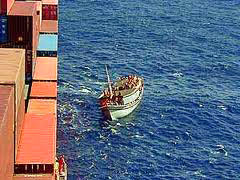
Peter Mares writes in
'The Monthly', Aug 2011
| John Howard’s stand on the Tampa is generally seen in retrospect as a political masterstroke that stopped the boats and helped him to secure the 2001 federal election.
But to leaf through newspaper clippings from those intense days of late August and early September 2001 is to be reminded that his government took a high-stakes gamble and came close to losing.
“Refugee Deal a Shambles” was the Sunday Age headline on 2 September.
A day earlier the Australian’s Paul Kelly described the government’s approach as an “inept saga of crisis management”, and found it astounding that Howard went into the drama “without any exit strategy”.
Even after the asylum seekers had been transferred from the container ship to HMAS Manoora (together with another 228 asylum seekers intercepted on another vessel) there was still no solution in place.
The Liberal government had approached newly independent and still-traumatised East Timor in the midst of its first national elections, as well as coup-prone Fiji and the microstates of Kiribati, Palau and Tuvalu.
Peter Reith eventually sealed a deal with a $20 million handshake on Nauru but, as HMAS Manoora was steaming from the Indian Ocean to the Pacific, yet another obstacle arose: Justice Tony North of the Federal Court ordered the government to bring the asylum seekers to the Australian mainland, invoking the “ancient power of the Court … to protect people against detention without lawful authority”.
The North judgement was handed down on 11 September, hours before the terrorist attacks on New York and Washington.
It was later overturned on appeal and, like many of the other details from the time, has now largely slipped from view.
It is important to recall what a high-wire act the Howard government was performing.
Important to remember too the enormous cost of the Pacific Solution: not just the hundreds of millions of dollars taken directly from public funds, but the damage done to Australia’s international reputation, the undermining of the principle of rescue at sea, the dubious skewing of our foreign aid program, the politicisation of the military, the erosion of defence force morale and the long, drawn-out suffering of those refugees warehoused in Nauru and Papua New Guinea – most of whom ultimately became fellow Australians.
Some might see all this as a price worth paying to stop the boats and save lives by deterring other asylum seekers from setting out on such a dangerous voyage.
But that is to assume Howard’s stand on the Tampa did stop the boats. In the four months after the Tampa affair (to the end of 2001), a further 12 suspected illegal entry vessels (SIEVs) arrived in Australian waters, carrying 2126 passengers between them.
Yet another boat tragically failed to arrive: the so-called SIEV-X (‘X’ for unknown) sank en route and 353 asylum seekers drowned.
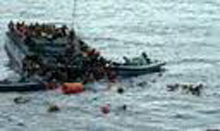
It is possible that the Tampa affair, the prospect of detention on Nauru and the SIEV-X disaster combined to deter some asylum seekers in Indonesia from risking the boat journey to Australia.
Also, Indonesia intensified its efforts to break the smuggling rackets at this time, and the Taliban was driven from power in Kabul, which provided some prospect of return home for displaced Afghans.
In my view, however, the decisive factor in the fall-off in arrivals at the end of 2001 was the government’s success in using the Royal Australian Navy to force boats back to Indonesia. [top of next column...] |
Four vessels – SIEVs 5, 7, 11 and 12 – carrying 502 asylum seekers between them, were sent back.
News of these forced returns would have circulated quickly among those waiting to board boats in Indonesia and would have undermined the deals on offer from smugglers, no matter what outcomes they promised.
Does that mean returning boats is the policy that should be pursued today?
No, because it creates unconscionable risk to life.
It increases the incentive for smugglers to send people to sea in the most unseaworthy vessels possible – vessels capable of making the journey in one direction only.
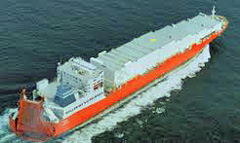
History warns us that such a policy will lead to these flimsy boats being sabotaged to prevent forced return as soon as they are in sight of Australian territory, or an Australian warship or customs vessel.
In his report into the fire that killed five people and injured dozens more aboard a boat intercepted at Ashmore Reef in April 2009, the Northern Territory Coroner found that some asylum seekers deliberately poured petrol on the decks and ignited the vessel because they were under the mistaken impression that the boat was going to be sent back to Indonesia.
A policy of turning back the boats is not an option in the immediate future in any case, as it would require active co-operation from the government in Jakarta.
This is a remote prospect in the wake of tensions over live cattle exports and the earlier bungled handling of the Oceanic Viking affair.
Indonesian officials saw Kevin Rudd’s insistence in October 2009 that Jakarta take responsibility for 78 asylum seekers rescued by the Australian customs vessel as evidence that Australia’s version of ‘burden sharing’ was heavily weighted to its own interests.
A decade on from the Tampa affair we are watching the Gillard government founder as it searches for a way to stop the boats.
The response to the Tampa was a circuit-breaker for the Coalition, and Labor wants to find something similar, more in an effort to rescue its political future than out of any attempt to develop coherent policy.
Perhaps some version of the East Timor–PNG–Malaysia solution may eventually come to fruition, or perhaps the Coalition will win office at the next election and revive the Pacific Solution in Nauru.
It is doubtful that either policy will bring a permanent end to boat arrivals given the extent and intractability of the global refugee crisis.
Other outcomes can be predicted with more certainty: whether detention is moved to Malaysia or Nauru or some other country, the financial and human costs will be enormous.
We will try to act for a while as if the problem has gone away and our responsibility has been absolved, but stories of self-harm, mental illness and heartbreak will continue to filter through from this new “offshore place” to disturb our peace.
As happened in the wake of the Tampa, people of good conscience – both outside our major parties and within them – will highlight the problems and advocate change.
Eventually the weight of evidence will influence public opinion and it will be acknowledged that the latest solution was no solution at all.
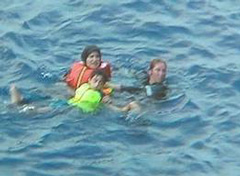
|
"One human family"
The message of
Pope Benedict XVI
for the
97th World Day of
Migrants & Refugees, 2011

| Dear Brothers and Sisters
The World Day of Migrants and Refugees offers the whole Church an opportunity to reflect on a theme linked to the growing phenomenon of migration, to pray that hearts may open to Christian welcome and to the effort to increase in the world justice and charity, pillars on which to build an authentic and lasting peace.
"As I have loved you, so you also should love one another" (Jn 13:34), is the invitation that the Lord forcefully addresses to us and renews us constantly: if the Father calls us to be beloved children in his dearly beloved Son, he also calls us to recognize each other as brothers and sisters in Christ.
This profound link between all human beings is the origin of the theme that I have chosen for our reflection this year: "One human family", one family of brothers and sisters in societies that are becoming ever more multiethnic and intercultural, where also people of various religions are urged to take part in dialogue, so that a serene and fruitful coexistence with respect for legitimate differences may be found.
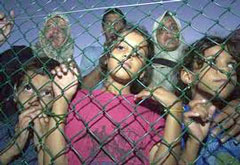
The Second Vatican Council affirms that "All peoples are one community and have one origin, because God caused the whole human race to dwell on the face of the earth (cf. Acts 17:26); they also have one final end, God" (Message for the World Day of Peace, 2008, 1).
"His providence, His manifestations of goodness, His saving design extend to all men" (Declaration Nostra aetate, 1).
Thus, "We do not live alongside one another purely by chance; all of us are progressing along a common path as men and women, and thus as brothers and sisters" (Message for the World Day of Peace, 2008, 6).
The road is the same, that of life, but the situations that we pass through on this route are different: many people have to face the difficult experience of migration in its various forms: internal or international, permanent or seasonal, economic or political, voluntary or forced. In various cases the departure from their Country is motivated by different forms of persecution, so that escape becomes necessary.
Moreover, the phenomenon of globalization itself, characteristic of our epoch, is not only a social and economic process, but also entails "humanity itself [that] is becoming increasingly interconnected", crossing geographical and cultural boundaries. In this regard, the Church does not cease to recall that the deep sense of this epochal process and its fundamental ethical criterion are given by the unity of the human family and its development towards what is good (cf. Benedict XVI, Encyclical Caritas in veritate, 42).
All, therefore, belong to one family, migrants and the local populations that welcome them, and all have the same right to enjoy the goods of the earth whose destination is universal, as the social doctrine of the Church teaches. It is here that solidarity and sharing are founded.
"In an increasingly globalized society, the common good and the effort to obtain it cannot fail to assume the dimensions of the whole human family, that is to say, the community of peoples and nations, in such a way as to shape the earthly city in unity and peace, rendering it to some degree an anticipation and a prefiguration of the undivided city of God" (Benedict XVI, Encyclical Caritas in veritate, 7).
This is also the perspective with which to look at the reality of migration. In fact, as the Servant of God Paul VI formerly noted, "the weakening of brotherly ties between individuals and nations" (Encyclical Populorum progressio, 66), is a profound cause of underdevelopment and – we may add – has a major impact on the migration phenomenon.
Human brotherhood is the, at times surprising, experience of a relationship that unites, of a profound bond with the other, different from me, based on the simple fact of being human beings.
Assumed and lived responsibly, it fosters a life of communion and sharing with all and in particular with migrants; it supports the gift of self to others, for their good, for the good of all, in the local, national and world political communities.
Blessed John Paul II, on the occasion of this same Day celebrated in 2001, emphasized that "[the universal common good] includes the whole family of peoples, beyond every nationalistic egoism.
The right to emigrate must be considered in this context. The Church recognizes this right in every human person, in its dual aspect of the possibility to leave one’s country and the possibility to enter another country to look for better conditions of life" (Message for World Day of Migration 2001, 3; cf. John XXIII, Encyclical Mater et Magistra, 30; Paul VI, Encyclical Octogesima adveniens, 17).
At the same time, States have the right to regulate migration flows and to defend their own frontiers, always guaranteeing the respect due to the dignity of each and every human person. Immigrants, moreover, have the duty to integrate into the host Country, respecting its laws and its national identity.
"The challenge is to combine the welcome due to every human being, especially when in need, with a reckoning of what is necessary for both the local inhabitants and the new arrivals to live a dignified and peaceful life" (World Day of Peace 2001, 13).
In this context, the presence of the Church, as the People of God journeying through history among all the other peoples, is a source of trust and hope.
Indeed the Church is "in Christ like a sacrament or as a sign and instrument both of a very closely knit union with God and of the unity of the whole human race" (Second Vatican Ecumenical Council, Dogmatic Constitution Lumen gentium, 1); and through the action within her of the Holy Spirit, "the effort to establish a universal brotherhood is not a hopeless one" (Idem, Pastoral Constitution Gaudium et spes, 38).
[top of next column...]
|
It is the Holy Eucharist in particular that constitutes, in the heart of the Church, an inexhaustible source of communion for the whole of humanity.
It is thanks to this that the People of God includes "every nation, race, people, and tongue" (Rev 7:9), not with a sort of sacred power but with the superior service of charity. In fact the exercise of charity, especially for the poorest and weakest, is the criterion that proves the authenticity of the Eucharistic celebration (cf. John Paul II, Apostolic Letter Mane nobiscum Domine, 28).
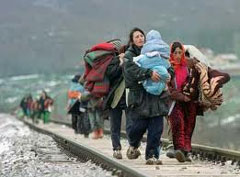
The situation of refugees and of the other forced migrants, who are an important part of the migration phenomenon, should be specifically considered in the light of the theme "One human family".
For these people who flee from violence and persecution the International Community has taken on precise commitments. Respect of their rights, as well as the legitimate concern for security and social coherence, foster a stable and harmonious coexistence.
Also in the case of those who are forced to migrate, solidarity is nourished by the "reserve" of love that is born from considering ourselves a single human family and, for the Catholic faithful, members of the Mystical Body of Christ: in fact we find ourselves depending on each other, all responsible for our brothers and sisters in humanity and, for those who believe, in the faith.
As I have already had the opportunity to say, "Welcoming refugees and giving them hospitality is for everyone an imperative gesture of human solidarity, so that they may not feel isolated because of intolerance and disinterest" (General Audience, 20 June 2007: Insegnamenti II, 1 [2007],1158).
This means that those who are forced to leave their homes or their country will be helped to find a place where they may live in peace and safety, where they may work and take on the rights and duties that exist in the Country that welcomes them, contributing to the common good and without forgetting the religious dimension of life.
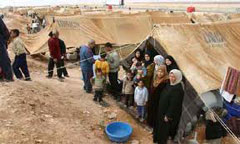
Lastly, I would like to address a special thought, again accompanied by prayer, to the foreign and international students who are also a growing reality within the great migration phenomenon.
This, as well, is a socially important category with a view to their return, as future leaders, to their Countries of origin.
They constitute cultural and economic "bridges" between these Countries and the host Countries, and all this goes precisely in the direction of forming "one human family".
This is the conviction that must support the commitment to foreign students and must accompany attention to their practical problems, such as financial difficulties or the hardship of feeling alone in facing a very different social and university context, as well as the difficulties of integration.
In this regard, I would like to recall that "to belong to a university community… is to stand at the crossroads of the cultures that have formed the modern world" (John Paul II, To the Bishops of the United States of America of the Ecclesiastical Provinces of Chicago, Indianapolis and Milwaukee on their ad limina visit, 30 May 1998, 6: Insegnamenti XXI, 1 [1998] 1116).
At school and at university the culture of the new generations is formed: their capacity to see humanity as a family called to be united in diversity largely depends on these institutions.
Dear brothers and sisters, the world of migrants is vast and diversified. It knows wonderful and promising experiences, as well as, unfortunately, so many others that are tragic and unworthy of the human being and of societies that claim to be civil.
For the Church this reality constitutes an eloquent sign of our times which further highlights humanity’s vocation to form one family, and, at the same time, the difficulties which, instead of uniting it, divide it and tear it apart.
Let us not lose hope and let us together pray God, the Father of all, to help us – each in the first person – to be men and women capable of brotherly relationships and, at the social, political and institutional levels, so that understanding and reciprocal esteem among peoples and cultures may increase.
With these hopes, as I invoke the intercession of Mary Most Holy, Stella Maris, I cordially impart the Apostolic Blessing to all and, especially, to migrants and refugees and to everyone who works in this important field.
From Castel Gandolfo, 27 September 2010
BENEDICTUS PP. XVI
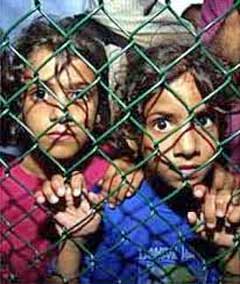
|
Violence in Kachin State:
The suffering and unwavering determination of the Kachin
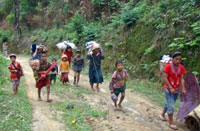
Author : Anonymous living in Australia
Published in the July newsletter of the Australian CatholicMigrant & Refugee Office.
[Migration], brings us into contact with men and women, our brothers and sisters, who for economic, cultural, political or religious reasons have left or have been compelled to leave their homes. Erga Migrantes Caritas Christi (EMCC), 96.
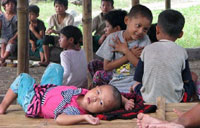
| Currently there are fierce battles raging throughout the Kachin State between the Kachin Independence Army (KIA) and the Burmese government.
Relations between the Burmese military and the Kachins have been deteriorating for years and have now reached a humanitarian crisis.
Military confrontation has now erupted and innocent lives are being lost. An estimated over 20 000 have fled to refugees camps at the Sino-Burmese border. The crisis is getting more and more serious.
Kachin is one of the major ethnic groups in Burma along with other groups such as Karen, Chin, Mon and Shan.
Kachins predominantly live in the Kachin state situated in far northern Burma.
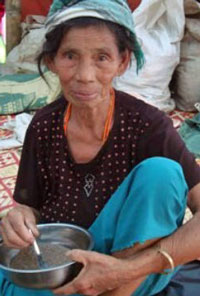
The category Kachin comprises of six ethnic sub-groups or principal lineages (Jinghpaw, Lawngwaw, Lashi, Zaiwa, Rawang, Lisu).
These six groups are deemed to share similar traditions, customs, dialects and practices living mainly in northern Burma, as well as parts of China and India.
An estimated one million Kachin live in Burma (continued page 3).
Under British rule from 1824 until 1948, many Kachin converted from traditional spirit worship animism to Christianity.
In modern Burma, the majority of Kachins are Christians, predominantly Baptists, followed by Roman Catholics and other Christian denominations.
The Kachin Independence Army (KIA) was formed in 1961 shortly after Burma’s first Prime Minister U Nu decreed Buddhism as the state religion of Burma, against the will of the Ethnic Minorities.
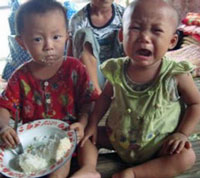
The KIA also formed in response to the unfulfilled promises of autonomy of an independent Kachin State outlined in the Panglong Agreement 1947.
In 1962 a military coup led by General Ne Win attempted to consolidate Burmese control over the “Frontier Regions”, which were home to various ethnic groups.
From 1961 until 1994, the KIA fought a gruelling and inconclusive war against the Burmese junta. Originally the KIA fought for independence, but now the official Kachin
Independence Organization (KIO, the political arm of the KIA) policy goal is for autonomy within a federal union of Burma, along with self-determination of rule and administration of land and resources.
In 1994 a “Cease-Fire” agreement between the KIA and the Burmese Army was signed.
On the 9th June 2011, open conflict erupted for the second time after the 17-year ceasefire.
The clashes began when the Burmese government concluded an agreement with China for the construction of a dam that will power a hydroelectric plant in Kachin territory.
The project will cause the forced displacement without adequate compensation and flooding of villages where the Kachin people live.
Local people refused to move provoking violent repression from of the Burmese Army.
The military-backed Burmese Government has exclusively become the “protector” of the Chinese Government's multi billion dollars investment interests in Kachin State. More clashes between the two sides broke out on the 2nd and 3rd July 2011.
Efforts to initiate a fresh “Cease-Fire” agreement have so far been unsuccessful.
Since the initial fighting broke out in June 2011 more than 20,000 Kachin refugees have fled to the China border fearing torture, abuse, rape, murder and forced to be used as porters for the Burmese soldiers as well as human mine sweepers by Burmese troops.
A local priest described the raging conflict in
Kachin States in northern Burma as "ethnic cleansing" and "humanitarian emergency" (Fides Service).
Priests and nuns in the diocese of Bhamo and Myitkyina and other local Christian church leaders including pastors and local non-governmental organisations are doing everything they can to help ethnic Kachin refugees, almost all are Christians, victims of a brutal repression carried out by the Burmese military.
[top of next column...] |
These refugees are without aid from any international humanitarian organisations as the Burmese Army is blocking any aid from reaching them.
Many are in danger of dying from disease and hunger. Meanwhile the military threaten anyone who attempts to help these displaced and suffering peoples.

Reports from the refugee camps count three young children who have died from diarrhoea in refugee camps on China-Burma border.
The Burmese Army’s reputation for the deliberate disregard of human rights, in particular the violation of internationally accepted norms regarding treatment of civilians in war, has been reported at nausea over the years. However, they seem immune to criticism or exposure
The newly designated government headed by President Thein Sein, who is also the Chairman of the military-backed Union Solidarity and Development Party (USDP) still controls the government, judiciary and armed forces.
This new government is essentially no different from the one it succeeded; one notoriously famous for its dictatorial military absolutism. Retired generals still rule.
Burma’s 64-year-old historic Panglong Agreement, signed on 12 February 1947, in theory recognises autonomy for the internal administration of “Frontier Areas”, including the creation of the Kachin State, has been ignored by the Burmese military regime.
It was an agreement that was reached through negotiation and mutual trust between the then head of the Army, General Aung San (Aung San Su Kyi’s father) and leaders of the Kachin, Karen, Chin and Shan ethnic groups. If the terms of that agreement had been honoured Burma would be a thriving, peaceful and prosperous federal union today.
The people of Burma have paid a heavy price and have lost the freedom of speech, freedom of worship, freedom to associate, and all other freedoms set out in the International Charter of Human Rights.
Kachins living in Kachin state in northern Burma have experienced five decades of oppression and atrocities under the Burmese dictatorship and a succession of brutal military regimes.
Most Kachin refugees have fled to neighbouring China along the Kachin-China border but none of them have been able to seek a humanitarian protection from the Chinese government. In most cases the Chinese authorities detain them. Women are subjected to human trafficking and forced prostitution.
Other Kachin refugees fled to Malaysia and others sought refuge in India.
A few of us including myself are fortunate enough to have been granted protection visas here in Australia and are now contributing towards the greater common good for this great country.
Many others have sought and been granted protection in other countries such as the USA, Canada, UK, Netherland, Japan and New Zealand.
The Kachin Association of Australia (KAA) is a non-profit organisation that represents the Kachin living in Australia.
Officially formed in August 2006, the KAA participates in the humanitarian assistance program of onshore and offshore Kachin refugees displaced from Burma because of social injustice, religious persecution, execution based on Kachin ethnicity, and political disagreement.
The Kachin community here in Australia would like the Australian Government, humanitarian aid agencies and fellow Australians to understand the current situation in Kachin State northern Burma.
This situation has not been publicized freely because of powerful media censorship by the military regime.
For those living outside of Kachin State, it is difficult to understand the harsh reality the people are facing. In undemocratic Burma, only the few military commanders with executive power control the whole country.
They have seriously oppressed media freedom and social and human rights activities, especially in Kachin State.
The Burmese military regime’s ethnic cleansing mentality fuels every Burmese soldier to act with violence, especially towards the strong-willed Kachin ethnic group. This is why the Kachin were forced to leave their homeland.
A source from the Kachin State said, a relief agency the Relief Action Network for IDP (Internally Displaced Person) and Refugee (RANIR) made up of members from the Kachin Independence Organisation (KIO), Kachin Churches andnon-governmental organizations was formed to help Kachin IDPs who are critical need of aid on Thursday, July 7.
Currently, there are a total of 12 make-shift temporary camps near the Chinese border, including six in Laiza, according to the Refugee Relief Committee of the KIO.

These relief groups are quickly running out of aid and essential supplies.
More clashes are underway and the escalation of the civil war continues creating the biggest humanitarian disaster in Northern Burma since World War II.
|
Malaysian refugee swap spells human rights disaster
Gregore Lopez
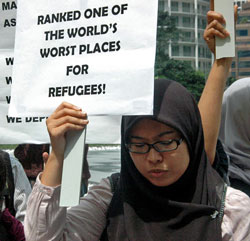
Malaysia’s history with human rights spells disaster for its refugee deal with Australia (AAP Image/Karlis Salna)
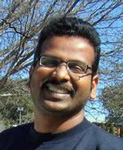
Greg Lopez is a researcher in Malaysian economics at Australian National University and is affiliated with the Malaysian Institute of Economic Research.
This article is from 'The Conversation',
Jul 27, 2011
| On Monday, Australia and Malaysia signed a deal that will mean 800 refugees that have arrived in Australia will be swapped with 4,000 verified refugees from Malaysia.
This deal from both Australian and Malaysian perspectives seems mind boggling.
For Australia, if the policy is not implemented properly and human rights of refugees are seen to be abused then Julia Gillard’s Labor government will face political disaster.
For Malaysia, it’s out of character with its long-term foreign policy of limited engagement and could embarrass the nation by putting a global spotlight on Malaysia’s terrible human rights record.
How the refugee deal fits in with Malaysia’s foreign policy strategy
The current Malaysian Prime Minister, Najib Razak has a clear strategy when it comes to foreign policy.
Firstly, to improve his personal international profile to compensate for declining domestic popularity.
And secondly to directly improve Malaysia’s economic fortunes by convincing international investors & entrepreneurs to invest in Malaysia.
But there are serious implications to Najib’s strategy.
Malaysia is very gradually moving away from its long-held position of non-alignment and limited engagement towards a tighter alliance with the US and two of its closest allies in the region – Singapore and Australia..
Under Najib, Malaysia’s relationship with the U.S., Australia and Singapore is the closest ever.
The number of difficult deals that Najib has delivered with these countries has made him appear to be an important asset..
One perspective is that Malaysia has opted to resolve the refugee matter at the bilateral level rather than through regional (Bali process) or multilateral (UN) channels.
But also the refugee swap deal falls into this broader trend of raising Najib’s international profile.
A puzzling policy
But what is puzzling is the fact that Najib would accept this trade-off between a higher profile for himself among government leaders for public humiliation. It is inevitable that due to the intense media scrutiny around this deal,
Malaysia’s atrocious human rights record will be put under the spot light.
If this is the principle reason Malaysia signed such a deal, then whose objectives were really being considered – Najib’s personal needs or the country?
Another theory is that the generous payments from the Australian government maybe trickling in to companies related to the ruling regime.
The Australian government will need to make public who are the beneficiary companies from this deal.
A history of immigrant tensions
The Malaysian authorities and a large number of Malaysians treat refugees, as well as legal and illegal migrant workers very poorly.
As Malaysia has a large informal working sector, a large unregulated formal sector, and a large illegal immigrant population – they are often blamed for all of society’s woes, particularly rising crime and decreasing wages.
The refugee community gets trapped in this conflict.
Add to this enforcement agencies that are laws to themselves in a society where corruption and extortion are rampant.
There are frequent needless deaths, injuries and humiliation in immigrant communities.
[top of next column...] |
A high level of racism
Racism is pervasive in Malaysia.
The most blatant and the most dangerous is the state sponsored racism by the ruling party (UMNO) who works within a coalition of 13 other parties (who are predominantly race or ethnic based)
The UMNO have a privileged position above the law, and intentionally cause division and hatred.
And at this present time, there is none more guilty than Prime Minister Najib Razak.
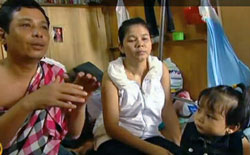
Human rights problems affect everyone
The concerns expressed by international human rights groups are justified. Malaysia’s history of human rights is simply atrocious.
This is despite the fact Malaysia is an upper middle-income economy with aspirations to become a high-income economy by 2020.
The decline in human rights in Malaysia is a broad based problem – one that not only affects refugees and immigrants (legal and illegal) but also Malaysians in general.
Even with a cursory glance at any of the international ranking reports from Human Rights Watch, Amnesty International, Reporters Without Borders, Freedom House, Trafficking In Persons Report, and the US Dept of State, one can see there is nothing favourable to say.
How can Malaysia protect others when it can’t protect its own citizens?
Malaysia’s democratic institutions have been severely compromised over the years, reaching its zenith during former prime minister, Mahathir bin Mohammad’s tenure.
Violence against individuals by state law enforcement agencies have been legitimised and enabling these agencies to believe they can act with impunity.
Furthermore, in Malaysia, lives in general do not have much value let alone the lives of migrants & refugees.
The number of deaths from traffic accidents and the number of deaths at public facilities are all on the rise.
It’s difficult to see how the human rights of these 800 refugees to be transferred from Australia can be protected when they will be integrated into the Malaysian community.
They will be vulnerable to state agencies who are corrupt, violent and antagonistic towards immigrant communities.
Even if the refugees were in a privately run detention centre, they may indeed have more freedom than in the streets of Malaysia, or at least they would be safer.
Gillard’s disaster would be a blip on Malaysia’s radar
Having said that, Australia will have a very strong incentive to make this deal work.
If Malaysia fails to hold up its side of the bargain, it would be a political disaster of biblical proportions for the Gillard administration
Meanwhile, this is a non-issue in domestic Malaysian politics.
In general, foreign policy does not concern Malaysians much unless its related to Islamic issues, particularly the situation in Palestine, and treatment of Muslims in general.
As noted earlier, Malaysians in general have a low opinion of migrant labour and so, they tend to treat migrant workers refugees poorly.
Hence, this deal has not and I believe will not gain political traction.
Although, the opposition has opposed this deal on principled grounds and pointing to Malaysia’s atrocious human rights record – it is not one of the issues that will cause sleepless nights for the ruling party. |
Don't turn a blind eye to
Sri Lanka's killing fields
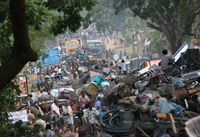
Australians will not tolerate cruelty to animals. Less clearly defined is our tolerance for cruelty towards people, writes Gordon Weiss (Sydney Morning Herald, July 10, 2011)
Gordon Weiss was a senior UN official in Sri Lanka, and is the author of The Cage: The Fight for Sri Lanka and The Last Days of the Tamil Tigers, Pan MacmillanLtd.
| Australians will not tolerate cruelty to animals.
Less clear is our tolerance for bestiality towards people.
Or so one might think from the stony silence after a British documentary aired on Australian TV last week.
The film proved that Sri Lanka's ‘rescue’ of hundreds of thousands of Tamil civilians in 2009 was a bloody and cruel affair.
Monday's ABC Four Corners broadcast of Sri Lanka's Killing Fields was almost unwatchable horror.
It showed in gory detail the killing of children, the mutilation of prisoners, the cold-blooded execution of unarmed people, and overwhelming evidence of the rape and killing of women.
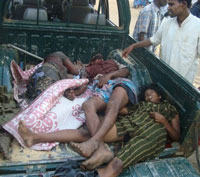
When shown on British TV three weeks ago, the same film caused outrage.
Questions were raised in Parliament. The Prime Minister, David Cameron, reassured a shocked nation that his government would lead action over the crimes so crudely caught frame by frame on mobile telephones as ‘trophies’ by triumphant Sri Lankan soldiers. Not so in Australia.
In 2009, Sri Lanka's army finally trounced the Tamil Tigers, a brutal insurgent group that had fought for independence for three decades.
On a small patch of land, the Tigers held more than 300,000 civilians as a buffer against the onslaught. The film now confirms what was long suspected.
The army of Sri Lanka secretly killed thousands of unarmed civilians as it manoeuvered for the final kill. Prisoners were slaughtered.
|
But a UN report in April this year went further. The UN's panel of experts detailed credible evidence that the same army systematically bombarded so-called no-fire zones sheltering civilians; deliberately bombed hospitals overflowing with wounded women and children; withheld food from starving people; and murdered prisoners.
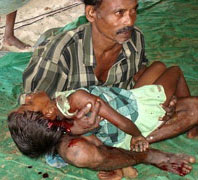
For the record, the Tamil Tigers were unspeakably brutal. They killed thousands of their own, perpetrated terrorist outrages, and used civilians as a bargaining chip.
But as one legal expert notes in the film, the barbarism of one side cannot excuse the barbarism of a sovereign government to its own citizens.
When shown in Geneva to ambassadors and UN officials a month ago, the same film provoked tears.
The response of Sri Lanka's diplomats, also in the audience, was blanket denial.
The film was a ‘fake’, they said, just as they try to convince Australians that Tamils in leaky boats are fake refugees.
Pictures, however, do not lie. Our revulsion at the images from Rwanda, or East Timor, or Cambodia, or Bosnia, was real.
Fellow Australians ought to tune in to Channel 4's film, and get with the picture.
Our political leaders must show the kind of moral leadership they were ready to display when driven by public outrage over cattle.
Let's lead on accountability for cruelty and murder, not just meekly follow in the wake of others. We did it in Libya. Why not now in Sri Lanka?
|
Kachins in Australia:
stop war and abuse
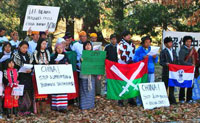
http://www.kachinnews.com/news
Jun 28, 2011
Other links:
ASIA/MYANMAR - Priests and nuns help 20 thousand Kachin refugees, victims of indiscriminate repression [Per visualizzare l'articolo, vai sul seguente link:http://www.fides.org/aree/news/newsdet.php?idnews=29367 ]
ASIA/MYANMAR - Caritas, the only organization committed to the humanitarian emergency in the scene of war [Per visualizzare l'articolo, vai sul seguente link:http://www.fides.org/aree/news/newsdet.php?idnews=29373 ]
ASIA/MYANMAR - War, violence and revenge: the plight of 10 thousand Christian refugees Kachin ethnic group [Per visualizzare l'articolo, vai sul seguente link:http://www.fides.org/aree/news/newsdet.php?idnews=29335 ]
http://www.fides.org/aree/news/newsdet.php?idnews=29354&lan=eng
http://www.fides.org/aree/news/newsdet.php?idnews=29276&lan=eng |
Kachins in Australia are demanding a stop to the war and abuse of people in Kachin State.
They are also calling on China to stop supporting the Burmese government, which is being backed by the notorious military regime.
About 60 Kachin people in Australia from Melbourne, Sydney and Brisbane participated in recent demonstrations in front of the Burmese and Chinese Embassies in Canberra.
The Kachin Association Australia (KAA) has sent a letter to Burmese Embassy demanding Burmese troops halt the military offensive and to initiate peaceful negotiations, and drew the world’s attention to Kachin ethnic affairs, demanded withdrawal of Burmese troops from Kachin State and told all Kachin around the world to wish the same for the people in the Kachin homeland.
They also demanded to the Chinese Embassy in a letter to stop business dealings and supporting the Burmese government. It also urged China to stop constructing hydropower plants and allow war refugees to cross the China border for shelter.
[top of next column...] |
The civil war started on June 9 between the Kachin Independence Army (KIA) and the Burmese Army after 17 years of a ceasefire agreement signed in 1994.
There are more than 20,000 Kachin ethnic war refugees, who have fled to the China border fearing torture, abuse, rape and use as porters by Burmese troops.
They are living without any aid. Refugees, who fled to Laiza headquarters of KIA told KNG they are fleeing fearing being used as porters by Burmese government troops on the front line of the war zone more than any other reason.
KIA officials said thousands of war refugees need immediate aid and there is no organization or international aid agency on the spot.
KIA is distributing two cans of rice to each refugee each day and a locally based NGO is providing health care.
But the KIA cannot support the refugees for a long period of time for they have their own struggle with continuous attacks by the Burmese Army. |
Religious leaders unite on climate change
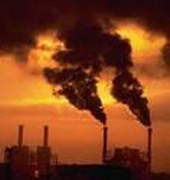
Australian Marist provincial and chairman of the NSW Conference of Religious Leaders, Fr Paul Cooney, reports that CLRI (NSW) is being well represented at the Jun 02 meeting with Prime Minister Gillard on climate change.
|
Sr Jill Finnane and other members of the CLRI Social Justice Committee are among the representatives of religious leaders of many different faith backgrounds converging on Canberra to push for action on climate change.
They will be meeting with Julia Gillard, Greg Hunt, Andrew Wilkie and around twenty other MPs.

The leaders are from Hindu, Uniting Church, Jewish, Baha’i, Buddhist, Catholic, Moslem, Jain, and Anglican religions are uniting to share their concerns.
Spokesperson for the delegation, Bishop George Browning, said the group will lobby the government on behalf of the many people of faith who believe urgent action is needed to curb climate change.
Their unity is noteworthy amid the confusion in the carbon tax debate today. “Let’s remember what all the fuss is about,” says Bishop Browning.
“Our generation has been given humanity’s last chance to avert a climate emergency. Our grandchildren will just have to bear with the results of what we decide to do now.”
[top of next column...] |
They advocate for public investment and incentives for the creation of renewable energy, stronger mandatory energy efficiency standards and substantial adaptation funding for developing countries.
The religious leaders are urging the Government to carefully consider the structure of a tax on carbon, and to think more broadly about options for reducing carbon emissions.
Bishop Browning, who was the ninth bishop of the Diocese of Canberra and Goulburn, is the Chair of the Anglican Communion Environmental Network. He and the other delegates are uniting through the multi-faith network Australian Religious Response to Climate Change (ARRCC).
“Taking the long view, the costs of acting now are bearable for a comparatively wealthy country like Australia. If we don’t act, the costs to our grandchildren, to people in the developing world and to biodiversity are unthinkable,” Bishop Browning said today.
“The naysayers are holding Australia back from taking responsible action with their fear-mongering and misinformation. Not only can we act, we must act.”
 |
After release from five years of detention, an asylum seeker says:
'The gate stayed on my foot'
Fr Jim Carty SM introduces stark research data on the mental health consequences of long-term detention for asylum seekers
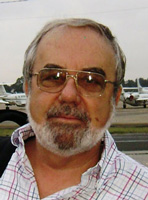
|
The policy of mandatory detention of asylum seekers in isolated centres for lengthy periods is counter productive both from the point of view of the detainees and the Australian community.
The cost of detention is outrageously expensive; so too the cost of providing on going life, medical and psychiatric care for many who have been granted protection and now live permanently in Australia struggling with mental health issues directly related to their time in detention.
What follows are a few quotations from a very comprehensive research paper for the 'Journal of Social Science and Medicine'.
This research confirms the sad experience of all those who have worked with and for former detainees. Read on...
Extracts from 'The meaning and mental health consequences of long-term immigration detention for people seeking asylum.'
[Guy J. Coffey a, Ida Kaplan a, Robyn C. Sampson b, Maria Montagna Tucci ]
Hopelessness and demoralisation
Mounting hopelessness and demoralisation were dominant and recurring themes for almost all participants.
One participant commented as follows: “The worst thing was that day by day there was no answer; then there was no hope”.
Another expressed his pervasive anxiety about the future in this way: “So I was living there, worried every hour and I’m not sure what is going to happen to me tomorrow. I am pretty sure it is going to be something, and it is going to be bad”.
A majority expressed fears of forced repatriation, and spoke of their deep distress at witnessing the forced removal of other detainees.
[top of next column...]
|
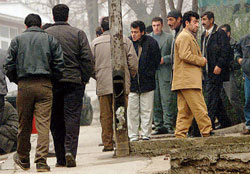
Participants reported repatriation ‘offers’ being put to them, with varying degrees of perceived coercion.
Changes to view of self
A prominent recurring theme for almost all participants was their perception that they had changed irrevocably as a person.
These changes were articulated primarily in relation to a sense of having failed in their role as protectors and providers for their families, and as a more general loss of agency.
Finally, on hearing they were to be released, the majority reported the absence of unmitigated joy or relief. As one participant put it: "I was happy but not so much because our life had been broken there, and my mind had been damaged, and I didn’t think I could make a new life when getting out of there."
“After five years in [detention] I came out, but the gate stayed on my foot”.
Conclusions
This study has shown that there is enduring harm rendered to asylum seekers who have been detained for prolonged periods in immigration detention.
The serious consequences of long-term detention described in this paper should be heeded by governments that rely on immigration detention to manage asylum seekers and other irregular migrants in their country.
An important implication of this study is that the nature of this harm compromises the capacity of refugees to benefit from the opportunities ultimately afforded by permanent protection.
Finally, damage to formerly detained asylum seekers’ sense of self, to their relationships, and to their core values may well be irrevocable.
Reparative justice requires acknowledgement of their treatment and active support to promote recovery. |
Refugee rage
Kerry Murphy
'Eureka Street', April 27, 2011
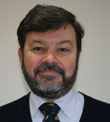
Kerry Murphy is a partner with the specialist immigration law firm D'Ambra Murphy Lawyers. He is a student of Arabic, former Jesuit Refugee Service coordinator, teaches at ANU and was recognised by AFR best lawyers survey as one of Australia's top immigration lawyers. |
Minister Bowen's announcement of 'tougher measures' for refugees in detention harks back to a time when the previous Government kept finding new ways of vilifying asylum seekers.
He is proposing changes to the character test and a new 'temporary visa'. It is sad that within such a short time, the Labor Government has moved away from the promising rhetoric of former Minister Evans at ANU in July 2008.
Senator Evans stated: 'A person who poses no danger to the community will be able to remain in the community while their visa status is resolved ... The department will have to justify why a person should be detained. Once in detention, a detainee's case will be reviewed every three months to ensure that the further detention of the individual is justified.'
As more boats came, and the Opposition ramped up the rhetoric to shrill antediluvian levels, the policy reforms were eroded. People were left in detention for longer and longer periods. The changes proposed do not address some of the causes of frustration in the first place.
I have clients in detention who have been there for over a year. Some took that long to finally get approval as refugees, now they are waiting for security clearances.
When I contact Immigration about the security delays I am told they know nothing, as the case is being processed by an 'another agency' — code for ASIO. Immigration cannot tell me how long this process will take.
I have no reason to doubt ASIO are doing what they should, but they are clearly under-resourced, because it is taking 9–12 months or even longer to get the security checks.
This period is commonly longer for clients out of detention.
When I complain about these delays to the Inspector General of Intelligence and Security (IGIS) I am told in classic Yes Minister style:
'We will not provide any other feedback but will contact you if we require any further information about the case. I suggest you maintain contact with the Department of Immigration and Citizenship (DIAC) for information about the status of the visa application.'
In other words: Don't call us and we won't call you!
So DIAC tell me they are unable to tell me anything, and IGIS tell me to contact DIAC.
[top of next column...] |
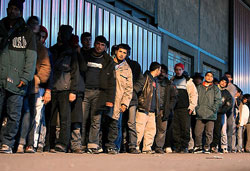
As an immigration lawyer, I am frustrated by this circular process. What must it be like, then, to be locked in detention and told after a year 'You are a refugee, you will be released, but we do not know when ... be patient.' And, 'There is nothing further we can tell you.'
The inability of Immigration to move the cases along is a major cause of the frustration among detainees, which led to the riots.
There are a number of major reports from experienced psychologists about the significant adverse consequences of prolonged detention. Now the Minister wants to punish them further.
The character test is already strong enough. Every person must pass the test before they get a visa for Australia.
Now refugees will have a higher hurdle than anyone else, despite being found to meet the refugee criteria. Furthermore, they will be punished by a temporary visa which precludes family reunion — one of the worst parts of the old TPV regime.
The Refugee Convention provides that someone should not be refused refugee status unless they have 'committed a serious non-political crime', been involved in 'war crimes, or crimes against humanity', or are a serious security risk. In my many years of practice, I have seen less than a handful of such cases, because they are rare.
Burning of property, and alleged assaults are serious and not to be condoned.
However, they are not so serious as to warrant someone not getting the full benefit of refugee protection.
A similar change was introduced by the Howard Government in 2001, leaving a number of refugees delayed in the process due to minor offences.
The criminal justice system can deal with these cases under existing laws.
The character test is strong enough; an individual fails if they have received a prison sentence of 12 months.
That is good enough for every other visa, why not for refugees?
The Minister needs to show leadership, let the criminal justice system deal with the cases, and not pander to the Opposition's 'race to the bottom' politics.
There are changes needed, but they relate to the need to speed up processing of security checks to avoid having people in detention for so long. |
Archbishop Romero's
31st anniversary

Extracts from an article by Fr Michael Campbell-Johnston SJ, former Provincial of the British Jesuits, on the occasion of the Anniversary of Archbishop Romero’s assassination
|
On 24 March 2011, people all over the world will be celebrating the 31st anniversary of the assassination of Archbishop Oscar Romero of San Salvador.
He was shot, by orders of the government, while celebrating Mass in the chapel of the hospital for incurables where, as Archbishop, he lived.
The previous day he had preached what was to be his last Sunday sermon in the cathedral. In it he made an appeal to the ordinary soldiers in the army and low-ranking policeman, calling on them not to obey immoral orders from their officers. His words were moving:
Brothers, you come from our own people. You are killing your own brother peasants when any human order to kill must be subordinate to the law of God which says ‘Thou shalt not kill’. No soldier is obliged to obey an order contrary to the law of God. No one has to obey an immoral law.
It is high time you recovered your consciences and obeyed your consciences rather than a sinful order.
The church, the defender of the rights of God, of human dignity, of the person, cannot remain silent before such an abomination.
We want the government to face the fact that reforms are valueless if they are to be carried out at the cost of so much blood. In the name of God, in the name of this suffering people whose cries rise to heaven more loudly each day, I implore you, I beg you, I order you in the name of God: stop the repression.
The following day, a sniper was sent to shoot him while he was offering Mass.
Little did the authorities realise that, instead of silencing his voice, this would spread it to the four corners of the earth, and that his message would give hope and inspiration to thousands.
When Romero’s predecessor, Archbishop Chávez y González, retired after 38 years, neither he nor the majority of his priests wanted Romero to succeed him.
Timid, retiring, hesitant, conservative in thought and action, he seemed the last person they needed at that particular moment of El Salvador’s history.
They wanted Bishop Rivera y Damas, auxiliary of San Salvador, a firm supporter of the post-Medellín Church who was not frightened to speak out.
But Romero was the candidate nominated by the Nuncio, who had consulted the government, the military, business circles and society ladies who felt he would be ‘one of ours whom we could control’.
They even offered him a luxurious mansion and a large new car, both of which he refused.
The story of Romero’s conversion, though he himself preferred to speak of rediscovering his roots, is well known but bears repetition.
While its importance should not be exaggerated, an event which occurred only three weeks after Romero had taken over as Archbishop had a profound and lasting effect on him.
Rutilio Grande, a young Salvadoran Jesuit priest, was assassinated, together with an old man and a 15-year-old boy as they were on their way to celebrate Mass in the small village church of El Paisnal some 30 miles north of the capital.
Romero and Rutilio had come to know each other ten years previously when both were living in the diocesan seminary, Romero as secretary to the Bishops’ Conference and Rutilio as teacher and prefect of the students.
[top of next column...] |
As soon as he heard of the assassination, Romero left the city and went to the church in Aguilares where the three bodies were laid out.
There he celebrated Mass with the Jesuit Provincial and then, with peasants who had come in from many surrounding villages, spent part of the night in prayer and part seeking advice on what should be done.
As Romero recounted afterwards, that night he read the Gospel message anew through the eyes of the poor and oppressed.
He began to understand what Jesus has to say, and therefore what he as Archbishop should also be saying to the despised, the persecuted and the underprivileged.
As he put it later to César Jerez, the Jesuit Provincial: ‘When I looked at Rutilio lying there dead, I thought: if they killed him for doing what he did, then I too have to walk the same path.’
When morning came, he returned to the capital, summoned his priests and advisers and decided after long and sometimes difficult discussions, to boycott all state occasions and meetings with the president until an official investigation into Rutilio’s death was carried out.
It never was, and throughout his time as Archbishop, Romero did not attend a single state occasion, not even the swearing-in of the new president.
He also decided to close all Catholic schools for three days, inviting both pupils and teachers to reflect on what had happened.
Finally, in the face of strong ecclesiastical opposition from the Papal Nuncio, he decided to suspend all Masses in the capital the following Sunday and celebrate just one Mass in the Cathedral with all his priests, both as a sign of protest to the Government and of solidarity with Rutilio and the cause for which he died.
Over 150 priests concelebrated the Mass which was attended by an estimated 100,000 people, one of the biggest crowds ever seen in the country.
And in the streets around the Cathedral, long lines queued up to go to confession.
For many, and not just Romero it marked a turning point.
The rest, as the saying goes, is history.
Over the next three years, Romero, visibly growing in strength and conviction, became the defender of the oppressed, ‘the voice of those who had no voice’, the conscience of a nation.
Finally, his message is still valid today and needed as much as it was 30 years ago.
The core of it, as he repeated many times, was the call of the Latin American bishops at their 1968 conference in Medellín, repeated in his presence at Puebla in 1979, for ‘the conversion of the whole church to a preferential option for the poor with a view to their integral liberation.’In a country torn apart by violence and bloodshed, he saw quite clearly where the root of the problem lay.
So what Romero has to teach us about being a genuine follower of Christ is still relevant to all of us.
He doesn’t mince his words: ‘It is inconceivable to call oneself a Christian without making, like Christ, a preferential option for the poor.’ ‘A Christian who defends unjust situations is no longer a Christian’; ‘The wealthy person who kneels before his money, even though he goes to Mass, is an idolater and not a Christian.’
And finally a warning: ‘It is a caricature of love to cover over with alms what is lacking in justice, to patch over with an appearance of benevolence when social justice is missing.’ |
Pacific or desert -
solution still the same
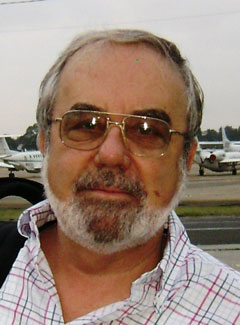
Fr Jim Carty SM interviewed by Jenny Cullen,
Catholic Communications,
Archiocese of Sydney.
|
The Gillard Government's announcement last night that it will build a $9.6 million detention centre at Wickham Point 35 kms south east of Darwin to house 1,500 asylum seekers has been greeted with consternation by Father Jim Carty, Coordinator of the Marist Asylum Seeker and Refugee Service (MARS).
"I am against any mandatory detention of asylum seekers and while I understand checks must be made, once initial assessments are carried out which should take only a week or two,
"I would like to see them permitted to enter and live within the communities until security checks, which take much longer are carried out," he says.
Once the checks by ASIO are completed then those judged to be genuine refugees and offering no security risk would be able to continue living in the community and to ultimately become permanent residents while those who did not pass their assessment as refugees would be returned to their homeland.
Instead of this, the government is simply building more detention centres in remote regions in what Fr Jim believes is a deliberate ploy to keep asylum seekers as far away from mainstream Australia as possible.
"It's a case of out of sight out of mind," he says and describes the new detention centre at Wickham Point in the remote northwest of the Northern Territory which is accessed for the last 5.6 kilometres by a bumpy unsealed road, as part of the Gillard government's "Desert solution."
Aligning this with remote detention centres in outback Western Australia at Curtin and Leonara, he insists this is on a par with the Howard Government's controversial Pacific Solution and as damaging and inhumane.
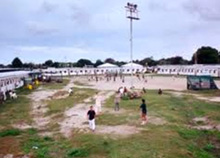
Nauru detention Centre where some were held
as long as five years
Fr Carty visited Nauru during the time the remote Pacific Island was used as an off-shore detention centre for asylum seekers who had landed in Australia seeking sanctuary.
He remembers the long term mental and emotional toll taken on those incarcerated on the Pacific atoll with some held there for as long as five years.
"The current Desert Solution is the same as the Pacific solution and as inhumane," he insists.
"These people are particularly vulnerable with many having escaped persecution, torture and continued threats to their lives or to their families, before escaping and risking everything to come to Australia in search of a better life," he says and has seen first hand the mental and emotional damage they suffer from their time in detention.
[top of next column...]
|
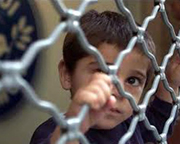
More than 1000 children are currently
held in detention
"This week I have learned that three men are in despair at Villawood and on hunger strikes while those committing self-harm or falling into deep depression and attempting suicide are on the increase on Christmas Island and elsewhere," he says.
For months and months, asylum seekers are kept on tender hooks, having no idea of their future, and coping with overcrowded conditions, and in the case of Christmas Island often living in double bunks under marquees now serve as housing.
But what concerns Fr Carty most are the 1,000 children held in detention.
"It is tough enough for adults but for children there is long term if not permanent damage," he says.
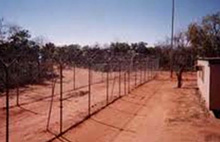
Curtin Detention Centre,
remote, hot and lonely
Psychological and behavioural experts together with lawyers, mental health leaders and others have constantly warned the government of the damage being wrought by keeping people in detention and for the most part, on off-shore or remote inhospitable locations such as Curtin.
And now, according to Chris Bowen, Minister for Immigration and Citizenship, from mid year yet another detention centre will open.
As with many of the others it will be remote with temperatures over 40 in summer and be several hours by road from Darwin.
Eventually the Wickham Point facility will hold 1,500 asylum seekers, while the detention centre at Scherger RAAF base near Weipa in Queensland, the Minister says, will continue to operate for another 12 months. Minister Bowen has also announced that the capacity at the Darwin Airport Lodge will be increased by 400 beds.
"The government is expanding its detention centres while the backlog of those waiting to be assessed and processed continues to grow and cause misery and great distress," says Fr Carty.
Mar 04, 2011
|
'Suspected Illegal Entry Vessel or SIEV, is the acronym used for any unauthorised boat entering Australian waters.'
Memories of SIEV X
-- and the victims
of SIEV 221

Fr Jim Carty SM
Manager, Pastoral Services, Catholic Care,
Archdiocese of Sydney |
On a headland overlooking Flying Fish Cove, the only relatively safe haven for boats to land at Christmas Island, is a small cairn of rocks surrounded at its base by river stones.
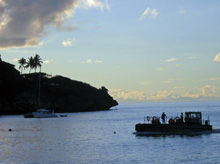
Who placed the cairn here is unknown but for anyone on the Island it is a heartfelt and lasting tribute to those aboard SIEV X, the flimsy overcrowded craft that sank in the deep waters between Indonesia and Australia in October 2002, claiming the lives of 353 asylum seekers.
Suspected Illegal Entry Vessel or SIEV, is the acronym used for any unauthorised boat entering Australian waters.
The number following, in this case X, is the tracking number used by Australian surveillance authorities. SIEV X would later become known as “A Certain Maritime Incident,” the name of the Senate Inquiry that followed and later adopted as the title for Tony Kevin’s powerful book on the tragedy.
Of the 400 aboard the vessel that night in October, only 47 survived. Among the dead were 146 children, 142 women and 65 men.
Few bodies were recovered and of the four reportedly picked up by an Indonesian fishing boat and taken to Indonesia, where they were buried or even if they were buried remains a mystery.
But in this small makeshift memorial of rocks and stones on Christmas Island’s headland, the dead of that terrible night are remembered.
The names and ages of the children who lost their lives are printed in indelible ink on each of the small river stones that surround the base of the cairn.
From late January to Easter last year, I spent nine weeks on Christmas Island providing pastoral service to the asylum seekers held at the Detention Centre as well to the small enthusiastic Catholic local community.
Each day throughout the time I was there, I would pass the simple memorial to SIEV X on my early morning walk.

Almost always, I stopped to offer a silent prayer, as I picked up the stones around the base and read aloud the names and ages written there: “Ali, 4, Alyla 6, Mohammed, 10.”
As I prayed, I’d look out to sea and try to imagine the terror these children and all the others on board must have felt as they desperately fought to survive in the darkness as their vessel sank far from land in unforgiving seas.
There would have been screams and cries for help and then later, as one after another sank beneath the waves, a cruel and terrible silence.
Last week, I recalled the cairn and the plight of those aboard SIEV X as eight victims of another shipwreck tragedy off Christmas Island were laid to rest in Sydney.
This time the children and adults mourned by family and relatives had lost their lives when SIEV 221, a wooden fishing boat carrying as many as 100 asylum seekers, broke up in violent turbulent seas off the needle sharp limestone rocks of the Island.
Within sight of the cairn on the headland above, the craft was dashed against the rocks and broke up tossing men, women and children into the roiling water and crashing waves.
Despite heroic attempts by local residents and later by crews on a customs vessel and naval boat, more than 50 lost their lives.
Few who saw the dramatic footage of the 15 December shipwreck and watched in horror as the boat broke up in huge seas off aptly-named Rocky Point, will ever forget those gut-wrenching scenes.
Nor will they forget the frantic efforts by local people who clambered down treacherous cliffs to throw life jackets into the raging waters, and their frustration at not being able to do more to rescue survivors.
Nor will anyone forget the courage of the Navy personnel who launched inflatables into the massive seas to risk their lives to save those of 41 men, women and children and to recover the bodies of 30 of the 50 to 60 estimated to have lost their lives.
Of the bodies retrieved 13 are still awaiting formal identification by the Australian Federal Police and have not yet been released by the WA coroner.
Identification has taken many weeks and it wasn’t until 15 February this year, exactly two months after the tragedy, that 17 of the bodies were finally released for burial.
Which is when 21 survivors of the tragedy and relatives of victims, were briefly released from detention on Christmas Island and flown to Sydney for the funeral services for eight of those drowned.
The remaining nine bodies of those released at the request of their families, were returned to villages in Iraq or Iran for burial there.
Much of the media attention that day went to the three buried in the Muslim section of Rookwood Cemetery. Indelibly etched in all our minds of that day was the grief-stricken face of eight-year-old Iranian boy, Seena who lost his father, mother and brother in the tragedy.
Held in detention ever since, broke down as his father’s coffin was lowered into the ground.
The boy’s tears were for all he had lost. But so far only the body of his father has been found.
[top of next column...] |
That day at Rookwood two other equally heart-breaking funerals were held. One was for an eight-month-old baby, the other for a four-year-old child.
As these funerals were taking place, on the other side of the city at Rouse Hill’s Castlebrook Memorial Park, Christian families and survivors of the shipwreck were holding services for five other victims of SIEV 221.
Typically the media gave little coverage to these funerals, focussing instead on the Rookwood Cemetery burials, adding to Australia’s ongoing false and unfair stereotyping of boat people as “Muslims” and “possible terrorist.”
I attended the funerals at Castlebrook Memorial Park which were conducted in the Chapel attached to the cemetery, by a young Anglican pastor.
The victims at these funerals were Protestant Christians, and like all Christians in Iraq, had undergone persecution, religiously-motivated attacks from extremists which had escalated since the US-led Coalition’s invasion in 2003.
Churches have been bombed, with many priests and clergy as well as their congregations killed.
Little wonder, Christians are fleeing war-torn Iraq in greater and greater numbers.
Those mourning their dead that day comprised just eight adults and a four year old girl.
All were either survivors or family of the victims. And all were detainees kept incarcerated on Christmas Island.
The child was dressed in purple but everyone else was in black.
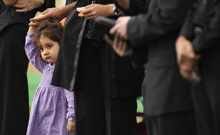
Sitting quietly in the front row of the chapel, the grieving relatives, who were also detainees flown in from Christmas Island, shared their pew with Department of Immigration personnel.
While outside carefully keeping watch were the ever-present guards from SERCO, which operate the detention camps on Christmas island, APF officers and a sprinkling of press.
A translator had been employed so the grieving family members could understand the young Anglican pastor.
But there were unfamiliar terms and he struggled with readings such as the 23rd Psalm and what seemed to me, to be an overly long sermon.
But throughout this, although obviously only comprehending less than half of what was taking place, the Iraqi relatives of the dead, remained silent and dignified, their eyes seldom leaving the five coffins draped in white palls, each with a small metal plaque giving the date of death and a tag number as identification.
During the service, one of the survivors was invited to play the piano.
He played with great skill and feeling and the haunting music he chose resonated with the other mourners connecting their faith to past memories and their lives in Iraq.
The relatives’ deep grief finally broke as the coffins were carried to the hearse and taken by three hearses into the cemetery itself where an exclusion Zone had been set up by APF and SERCO to keep the press at bay.
Unnervingly special frames had been set up over the graves and using these, the five coffins in unison were slowly lowered into the ground.

Rose petals were handed to the mourners to sprinkle on the coffins after they had reached their last resting place.
The little girl in purple gathered a handful and with childlike solemnity went from grave to grave releasing brilliant red and pink petals.
Then with the formal part of the service over, the survivor who had played piano inside the chapel, brought out a guitar and began singing hymns in his and his fellow detainees’ own language.
For more than 15 minutes the mourners raised their voices in song, turning to God as they sought understanding for the tragedy as well as consolation.
But as yet there is no memorial to those who died on 15 December in the relentless seas off Rocky Point.
I hope someone will build a memorial as a tribute to those who sought safety for their children and a new life in Australia, only to die within sight of that dream.
I like to imagine that one day there will be a cairn on Rocky Point to remember SIEV 221 and that it will sit opposite the cairn with its rocks and river stones on the headland on the other side of Flying Fish Cove.
The two would be like silent sentinels, each within sight of the other, reminding whoever passes of the ongoing flow of people forced from their homes by war, torture, persecution and fear for their lives, and risking everything to find a haven elsewhere and begin a new life.
But after this, let us hope and pray there will never again be a need to construct another such memorial on Christmas Island.
And that the detention centre is dismantled and Australia welcomes refugees instead of fearing them.
Posted, Mar 07, 2011 |

Religious leaders of NSW encourage action on prisons, housing and climate change.... |
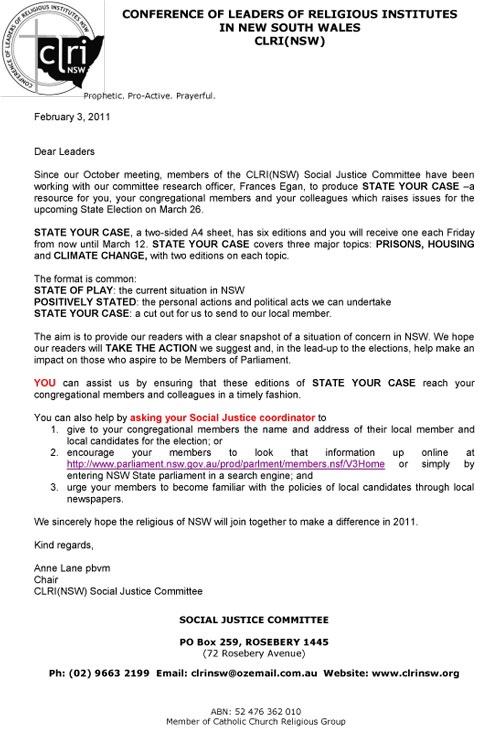 |
|




